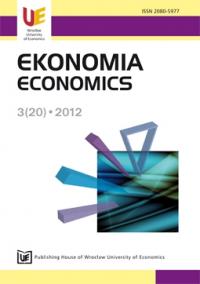The specificity of clusters in the Asian economies
The specificity of clusters in the Asian economies
Author(s): Anna JankowiakSubject(s): Economy
Published by: Wydawnictwo Uniwersytetu Ekonomicznego we Wrocławiu
Keywords: clusters; Asian economies; industrial clusters
Summary/Abstract: Clusters are interconnected companies and national institutions, contributing to increased competitiveness, to increasing innovation, to creating new products, new businesses and new jobs. Clusters, by the specificity of their character, combine business operations and local government agencies and scientific entities, thus contributing to the rapid growth of local economies. They are also an opportunity formany small- and medium-sized companies operating locally and without hope of crossing the boundaries of the region. Therefore, they constitute a good solution for both local businesses and for local economies which drive economic growth. Clusters are present in most national economies, but in different economic conditions they are invarious stages of development. Despite the theoretical and practical analysis of clusters, one has not yet defined a generic model that can explain the success and decline of some clusters. However, the advantages of this phenomenon are well-known and recognised and are one of the main reasons for the current focus on clusters. Clusters work in most national economies, but in all conditions the structure and pattern of action is different. The final shape of the cluster is affected by a number of factors, which are indirectly and directly related to the location. This article aims to provide specific models of the functioning of clusters in Asia, particularly in China and Japan. There is also a very interesting forecast for the Asian clusters in 2040, according to which a number of significant clusters of different industries will be located just in Asian countries.
Journal: Ekonomia
- Issue Year: 2012
- Issue No: 20
- Page Range: 22-32
- Page Count: 11
- Language: English

